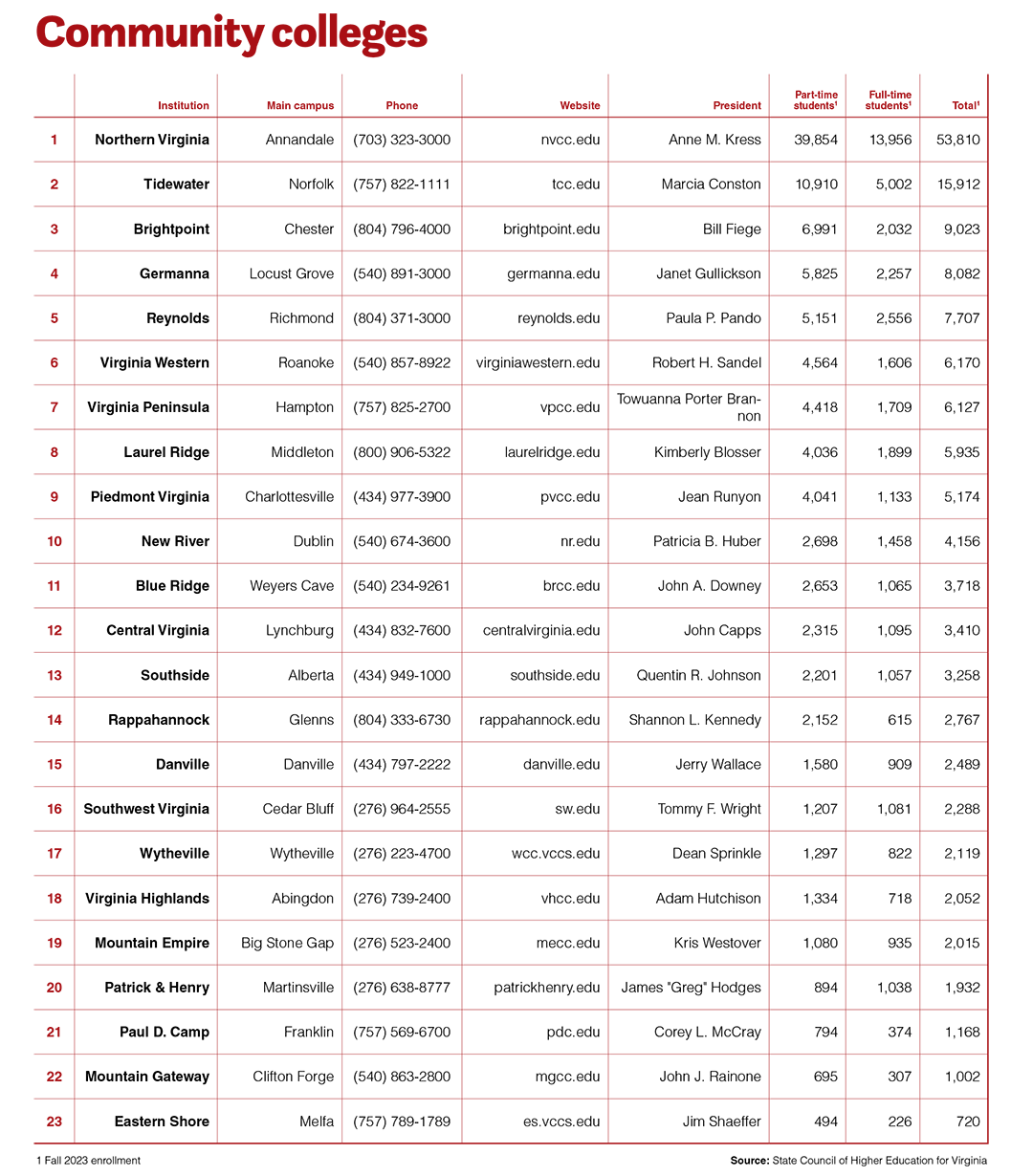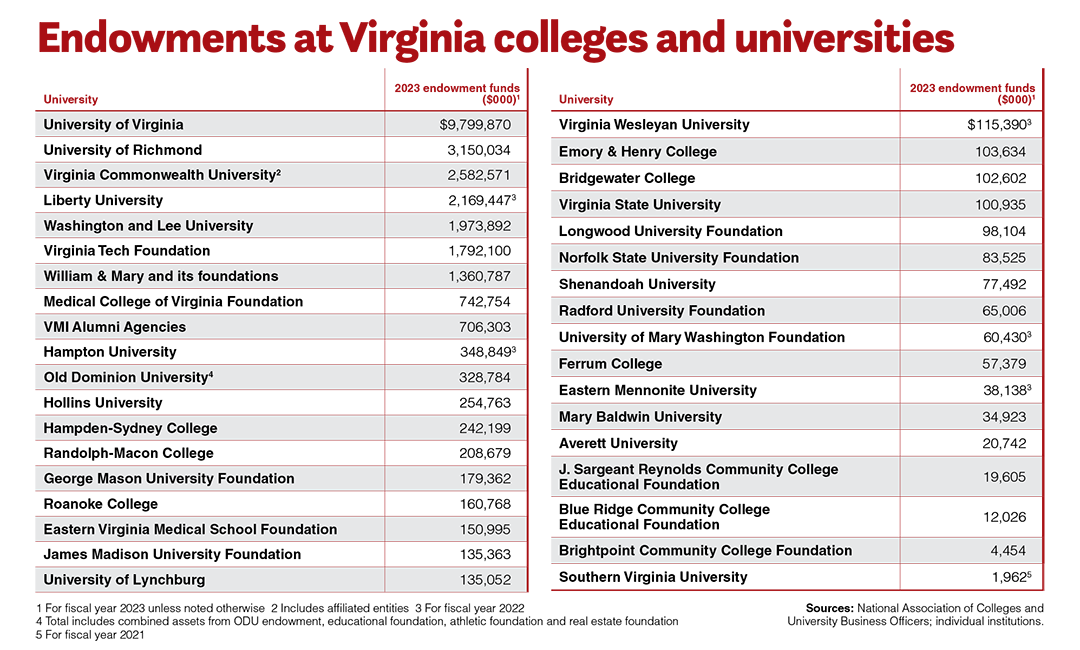New options, new audiences
Private schools reach out to cost-conscious students
M.J. McAteer //February 28, 2024//

Virginia’s private universities are focused on meeting workforce demands, says Shenandoah University President Tracy Fitzsimmons. “We are going to where there is a societal need, with a focus on professional preparation and training.” Photo by Will Schermerhorn

Virginia’s private universities are focused on meeting workforce demands, says Shenandoah University President Tracy Fitzsimmons. “We are going to where there is a societal need, with a focus on professional preparation and training.” Photo by Will Schermerhorn
New options, new audiences
Private schools reach out to cost-conscious students
M.J. McAteer //February 28, 2024//
As more students and their families question which colleges present the best return on their big investments, many are choosing to play it safe. That often means starting at community college or public universities while living at home, with others postponing post-secondary education or considering other options.
The impact of college loan debt and soaring tuitions have put more pressure on four-year schools — especially private institutions, which are widely viewed as serving the rich, even when most offer extensive financial aid that doesn’t involve high-interest loans.
The Sallie Mae 2023 “How America Pays for College” report found that 78% of the families eliminated certain colleges based on cost, an indication that many people are not aware of the amount of available financial aid.
“Everyone knows that when you go to a car dealership, the sticker price isn’t what you pay, but not everyone realizes that the same applies to college tuitions,” says Roanoke College President Frank Shushok Jr.
To clarify the real cost of a Roanoke education, his school did a tuition reset in 2022, dropping its list price from $46,510 to $33,510. “It’s not truly a reduction,” Shushok says. “Just a more transparent price.”
The University of Lynchburg, Randolph College, Virginia Union University and Bridgewater College all have instituted similar resets, although the jury is still out on its long-term impact on enrollment.
But Roanoke had its largest ever number of applications last fall, Shushok says, and its enrollment was up 5%. That was a bit better than the 3% overall enrollment increase at Virginia’s public and private schools, as reported by the State Council of Higher Education for Virginia (SCHEV), and a lot better than the 1.2% increase nationwide reported by the National Student Clearinghouse.
Other schools are coming up with different solutions, all with the aim of remaining competitive in the changing higher education environment.
In Winchester, 80% of Shenandoah University students receive financial assistance for the $35,000 annual tuition, says President Tracy Fitzsimmons. (The average non-need-based scholarship or grant awarded to SU first-year students is $28,242, according to U.S. News & World Report.)
At Hampton University, the average aid package of $17,162 helps offset the $29,162 tuition. And at the University of Richmond, need-based aid packages average $60,740 toward the roughly $80,000 annual costs for tuition and room and board. President Kevin F. Hallock also says that his school gives $5,000 to students who undertake paid or unpaid internships.
Several of Virginia’s private colleges and universities, including UR, Mary Baldwin University and Washington and Lee University, go even further with financial aid through incentives known as “Promise Programs.” The exact criteria for eligibility varies, but some of these programs offer a tuition-free education to qualifying low-income students.
Overall, the commonwealth’s private schools doled out $900,000 in financial aid and scholarships last year, while raising tuition by an average of just 1.1%. Meanwhile, tuition at their public counterparts went up an average of 3.9%.
Christopher K. Peace, president of the Council of Independent Colleges in Virginia, says that the commonwealth’s private institutions offer an abundance of financial assistance and are more affordable than people realize.
“When you provide scholarships and grants, plus the state’s $5,000 yearly Tuition Assistance Grants, you can get to the point of being almost as affordable as going to a public university,” says Matthew D. Shank, president of the Virginia Foundation for Independent Colleges.1 TAGs are yearly grants that the state offers to all full-time, in-state private college and university students. For HBCUs like Hampton University, the TAG is $7,500.
Overall, the headcount of college students in Virginia grew by 15,372 in 2023, with 8,409 of those new students opting for a private school education, according to SCHEV. That may seem balanced, but SCHEV Policy Analytics Director Tod Massa notes that much of that private school growth is attributable to Liberty University.
In fall 2023, the Lynchburg private evangelical university’s undergraduate and graduate enrollment reached 98,000, up from 92,000 in 2022 and 89,000 in 2020. Liberty was responsible for 5,255 of those 8,409 new private school students, Massa says. “Those kinds of numbers skew any discussion of private universities.”
Fewer traditional students
Another issue affecting public and private colleges is the smaller number of younger people in the United States. As of 2020’s Census, 22.2% of the population is under 18, down from 24% in 2010 and 26% in 2000. That diminishes the pool of traditionally aged students entering college. Some of these students go straight from high school into the workforce, especially if they earn professional certification during high school.
That means colleges are looking beyond traditional students, including veterans or people changing careers. Many schools are also working to recruit students from underserved backgrounds, particularly students of color. Roanoke College has reached a goal of 40% enrollment of underrepresented minorities and otherwise underserved students among its undergraduates.
Marymount University’s enrollment is more than a quarter Latino, leading to its federal designation in 2020 as a Hispanic-Serving Institution, which makes the Arlington school eligible for more federal grants and $7,500 TAGs.
Virginia’s private schools graduate half of the state’s working degreed nurses and 30% of all its four-year students, Peace says, yet TAGs represent less than 3.4% of the commonwealth’s $100.3 million higher education budget for fiscal 2024. What’s more, he says, if private school students were instead educated at any one of Virginia’s public colleges and universities, it would cost the state double the TAG costs in subsidies.
With more diverse student bodies, schools offer different and broader curricula — less ivory tower and more pragmatic.
“Parents want to be assured that their kids will have jobs when they graduate,” says Irma Becerra, Marymount’s president. To that end, she has been augmenting the school’s already strong nursing and science programs with new degrees in fields such as biomedical engineering and neuroscience.
The state’s other private higher education institutions are doing the same. “We are going to where there is a societal need, with a focus on professional preparation and training,” says Shenandoah’s Fitzsimmons. Among her university’s recent additions are degrees in aviation, biochemistry and speech pathology.
“Private universities are a really good deal for the state,” says UR’s president, Hallock, “but more support from [the state] would provide exponential benefits.”
Private research
On several Virginia private colleges’ wish lists for becoming more attractive to students is boosting their research classifications.
The United States has 146 Research 1, or R1-rated, research colleges and universities — schools that spend at least $50 million on research and produce at least 70 doctorates annually with research components. R1 is the top research ranking awarded by the Carnegie Classification of Institutions of Higher Education.
Virginia has five R1 universities, all of which are public: George Mason University, the University of Virginia, Virginia Commonwealth University, Virginia Tech and Old Dominion University.
James Madison University and William & Mary, also public institutions, are among the nation’s 133 R2 institutions, with at least $5 million invested in research and 20 annual doctorates. Hampton University was the state’s only private R2 institution, but it lost its classification during the pandemic, when it was unable to graduate the requisite number of Ph.D. students.
Hampton President Darrell K. Williams expects to regain R2 status this fall, as the university was awarded a $4.9 million Department of Education grant to establish a climate science degree and a $1.7 million grant from the Simons Foundation to advance research in fusion plasma science. On top of that, Hampton allocates between $20 million to $25 million toward research. Nonetheless, Williams says, Hampton needs assistance from the state to keep up its research work.
“We do need state funding to provide our unique capabilities,” Williams says. “It is very important that private institutions get included in the research portfolio of the commonwealth.”
Peace is cautiously optimistic that the Virginia General Assembly will see fit this session to incrementally raise TAGs from $5,000 to $6,000 by 2026, yet he and some other advocates for the state’s private schools have a longer-term goal — to see one or more of the commonwealth’s private schools attain a coveted R1 or R2 rating.
Becerra and Peace, too, have joined the call for public funding. In a December 2023 column published by the Richmond Times-Dispatch, the two laid out their case for state funding to assist Virginia private universities to attain R1 or R2 status. As an example, they pointed to Mercer University, a private R2 school in Georgia that has benefited from state support, and to a public-private partnership in Austin that created the prestigious Cancer Prevention & Research Institute of Texas.
“For a state to be known for a state-of-the-art health sector depends on a steady flow of important research,” Becerra says. “Virginia has not invested in research at private universities, and it is missing out on important opportunities.” Within a couple of years, she says, her goal is for Marymount to gain R2 status, even without financial assistance from the state.
Not every backer of the state’s private colleges and universities agrees that Virginia needs a private R1 or R2 school, though.
“It takes a lot of resources to go from an institute focused on teaching to one that emphasizes research,” says Shank, president of the VFIC. “U.Va., Virginia Tech and Virginia Commonwealth already have that status, and it would be hard to compete with their massive head starts.”
Shushok also cites the law of supply and demand. “With fewer high school grads coming into the pipeline,” he says, “it might be best to invest more in what you already have.”
-






















